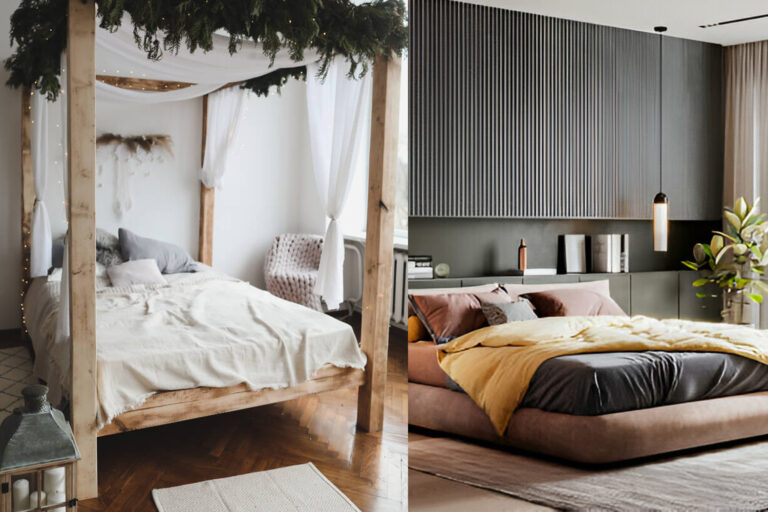
Handmade Furniture vs. Machine-Made Furniture: Why is Handmade Furniture Better?
As more people seek out the best quality furniture for their homes, the debate between handmade and machine-made pieces becomes increasingly relevant. Handmade furniture, celebrated for its superior craftsmanship and unique designs, starkly contrasts the mass-produced nature of machine-made items.
While machine-made furniture offers consistency and often comes at a lower cost, it typically lacks the character and durability of handcrafted alternatives.
Handmade pieces boast greater attention to detail and excel in sustainability and longevity. This exploration reveals why handmade furniture, with its rich tradition of quality and individuality, often provides a more rewarding home furnishing experience.
The Essence of Craftsmanship
Craftsmanship lies at the heart of furniture making, embodying the dedication and skill of artisans. Handmade furniture epitomises unparalleled craftsmanship, with artisans meticulously crafting each piece by hand.
Every curve, joint, and detail is infused with the artisan’s personal touch and expertise, resulting in the best quality furniture that exudes character and authenticity.
In contrast, machine-made items lack this human connection, relying on automated processes prioritising efficiency over individuality.
Unique Designs That Tell a Story
Handmade furniture offers more than just functionality. It tells a story of artistry and creativity. Each piece boasts a unique, one-of-a-kind design that reflects the vision and craftsmanship of its maker.
Unlike machine-made furniture, which follows standardised designs, handmade pieces can be tailored to suit individual tastes and complement any interior style.
From custom carvings to intricate details, handmade furniture offers endless possibilities for creating the best quality furniture for personalised spaces.
Built to Last: Durability and Longevity
One of the hallmarks of handmade furniture is its unparalleled durability and longevity. Artisans take great care in selecting the best quality furniture materials and employing traditional joinery techniques that have stood the test of time.
This meticulous attention to detail enhances the furniture’s aesthetic appeal and ensures its structural integrity.
As a result, handmade furniture surpasses its machine-made counterparts in resilience, making it a timeless investment that can be passed down through generations.
Sustainable and Eco-Friendly Choices
Handmade furniture not only embodies craftsmanship but also reflects a commitment to sustainability and eco-friendliness. Artisans often prioritise using locally sourced materials, reducing the carbon footprint associated with transportation.
Additionally, handmade furniture is typically built to last, reducing the need for frequent replacements and minimising waste. In contrast, the mass production methods used in machine-made furniture often have a larger environmental footprint, contributing to pollution and resource depletion.
By choosing handmade furniture, consumers can amplify their living spaces with the best quality furniture pieces that make a positive impact on the environment.
The Value of Investing in Handmade Furniture
Investing in the best quality furniture, particularly handmade pieces, offers unparalleled long-term value despite the initial higher cost. While machine-made furniture may seem more budget-friendly upfront, handmade furniture proves its worth over time through superior durability and timeless beauty.
Beyond monetary value, handmade furniture holds emotional significance, providing a sense of pride and connection to the craftsmanship and artistry behind each piece.
Moreover, well-crafted handmade furniture commands higher prices due to meticulous craftsmanship, quality materials, and the time invested in each unique piece of furniture often appreciates in value over time, making it not just a purchase but a valuable asset.
Considering both the aesthetic and emotional value, investing in handmade furniture is a decision that pays dividends in both quality of life and potential resale value.
Conclusion
The distinctions between handmade and machine-made furniture clearly highlight the superior benefits of choosing handmade. With its unmatched craftsmanship, bespoke designs, and enduring durability, handmade furniture enhances your space and supports sustainable practices.
Opting for handmade pieces is not just about acquiring furniture; it’s about making a conscientious decision about the quality and longevity of your home decor.
Are you ready to transform your space with the finest quality furniture? Reach out to Emburys Carpentry, your reliable partner for residential and commercial projects.
Whether it’s kitchen and bathroom renovations, new builds, or painting and decorating, we are dedicated to bringing our expertise and passion to your project.
Experience the difference with Emburys Carpentry today!
Frequently Asked Question
Handmade furniture commands higher prices due to meticulous craftsmanship, quality materials, and the time invested in each unique piece.
Furniture can be made from wood, metal, glass, and various fabrics, each chosen for its durability and aesthetic appeal.
Handcrafted furniture is generally more sustainable, utilising local materials and producing less waste than mass-produced items.

